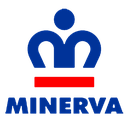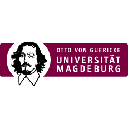Executive Secretary

11nd International Conference of Mechanical Engineering
COMEC 2023
XVIII Materials and Welding Symposium
Abstract
Abstract:
• Problem: The effect of the cording method with oscillation and without oscillation on the dilution and properties of the deposit is not known.
• Objective: Study the effect of the cording method (straight and oscillated) on the dilution of the recharge tank, using the SMAW process and a high alloy electrode intended for recharging surfaces subjected to abrasive wear.
• Methodology: 4 deposits were made on AISI 1020 metal plates using the straight and oscillated cording methods, with the UTP 711B consumable. Then samples were obtained for the study of hardness behavior and metallographic analysis with the optical microscope (OM).
• Results and discussion: The deposits made with the straight cording method presented microstructure with hypereutectic morphology with hardness values greater than 700 HV. On the other hand, those made with the oscillated cording method presented a hypereutectic microstructure with hardness values lower than 650 HV.
• Conclusions: The straight cording method is more effective since it provides less heat to the base metal, causes less dilution in the deposits and they have higher hardness values. Therefore, when comparing both cording methods, straight cording method is recommended for resurfacing surfaces subject to abrasive wear.
Resumen
Resumen:
• Problemática: No se conoce el efecto del método del cordoneo con oscilación y sin oscilación sobre la dilución y las propiedades del depósito.
• Objetivo: Estudiar el efecto del método de cordoneo (recto y oscilado) en la dilución del depósito de recargue, realizado mediante el proceso SMAW y un electrodo de alta aleación destinado al recargue de superficies sometidas a desgaste abrasivo.
• Metodología: Se realizaron 4 depósitos sobre placas de metal AISI 1020 utilizando los métodos de cordoneo recto y oscilado, con el consumible UTP 711B. Luego fueron obtenidas muestras para el estudio del comportamiento de la dureza y análisis metalográfico con el microscopio óptico (MO).
• Resultados y discusión: Los depósitos realizados con el método de cordoneo recto presentaron microestructura con morfología hipereutéctica con valores de dureza superiores a 700 HV. En cambio, los realizados con el método de cordoneo oscilado presentaron microestructura hipereutéctica con valores de dureza inferiores a los 650 HV.
• Conclusiones: El método de cordoneo recto es más efectivo ya que aporta menos calor al metal base, provoca una menor dilución en los depósitos y estos presentan mayores valores de dureza. Por tanto, al comparar ambos métodos de cordoneo el de cordoneo recto es el recomendado para el recargue de superficies sometidas al desgaste abrasivo.
About The Speaker

Ing. Félix Daniel Machado Zulueta

Discussion



